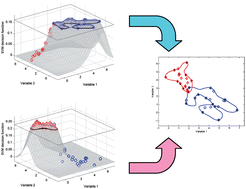The increasing interest in Support Vector Machines (SVMs) over the past 15 years is described. Methods are illustrated using simulated case studies, and 4 experimental case studies, namely mass spectrometry for studying pollution, near infrared analysis of food, thermal analysis of polymers and UV/visible spectroscopy of polyaromatic hydrocarbons. The basis of SVMs as two-class classifiers is shown with extensive visualisation, including learning machines, kernels and penalty functions. The influence of the penalty error and radial basis function radius on the model is illustrated. Multiclass implementations including one vs. all, one vs. one, fuzzy rules and Directed Acyclic Graph (DAG) trees are described. One-class Support Vector Domain Description (SVDD) is described and contrasted to conventional two- or multi-class classifiers. The use of Support Vector Regression (SVR) is illustrated including its application to multivariate calibration, and why it is useful when there are outliers and non-linearities.

You have access to this article
 Please wait while we load your content...
Something went wrong. Try again?
Please wait while we load your content...
Something went wrong. Try again?


 Please wait while we load your content...
Please wait while we load your content...